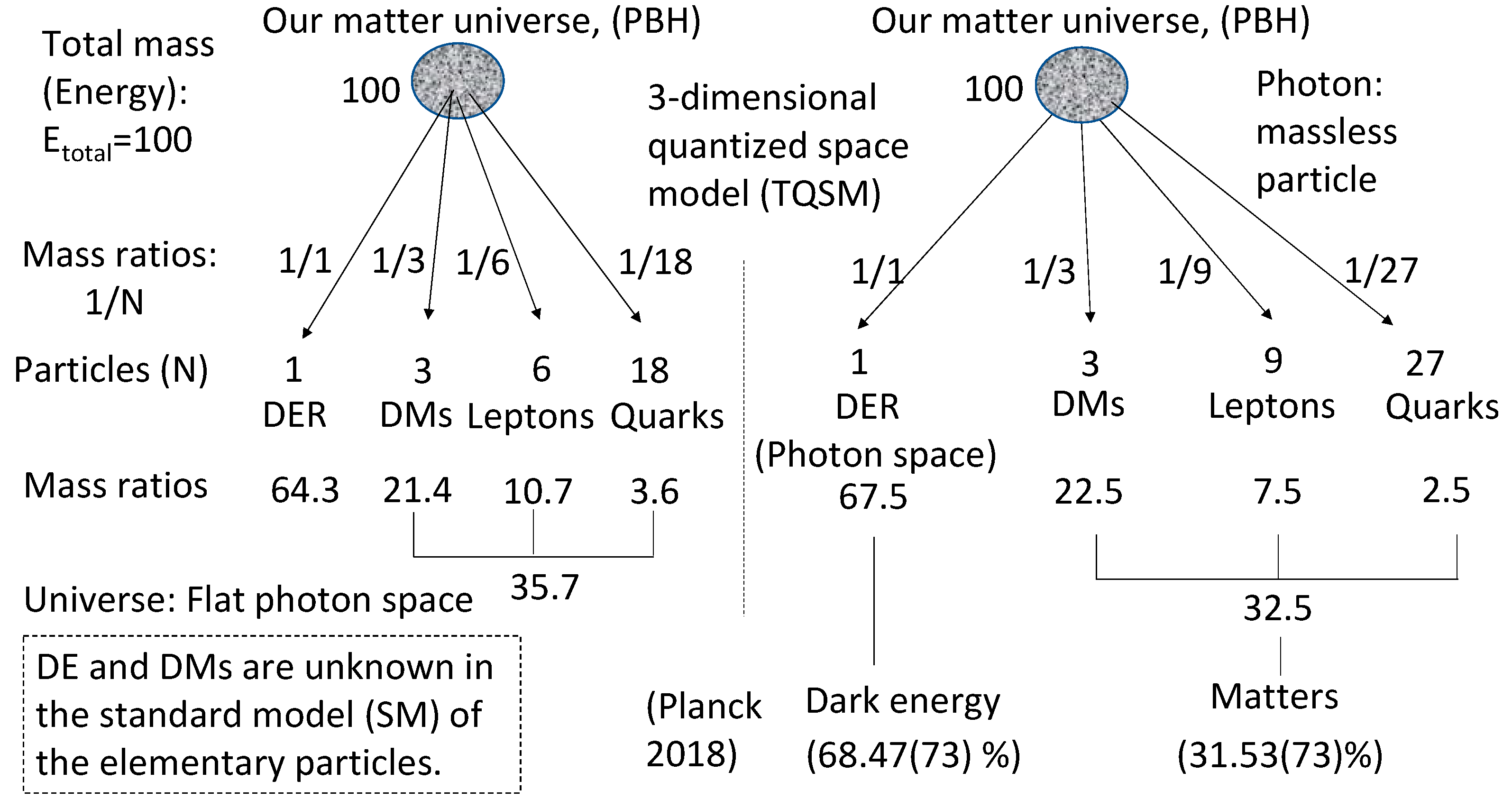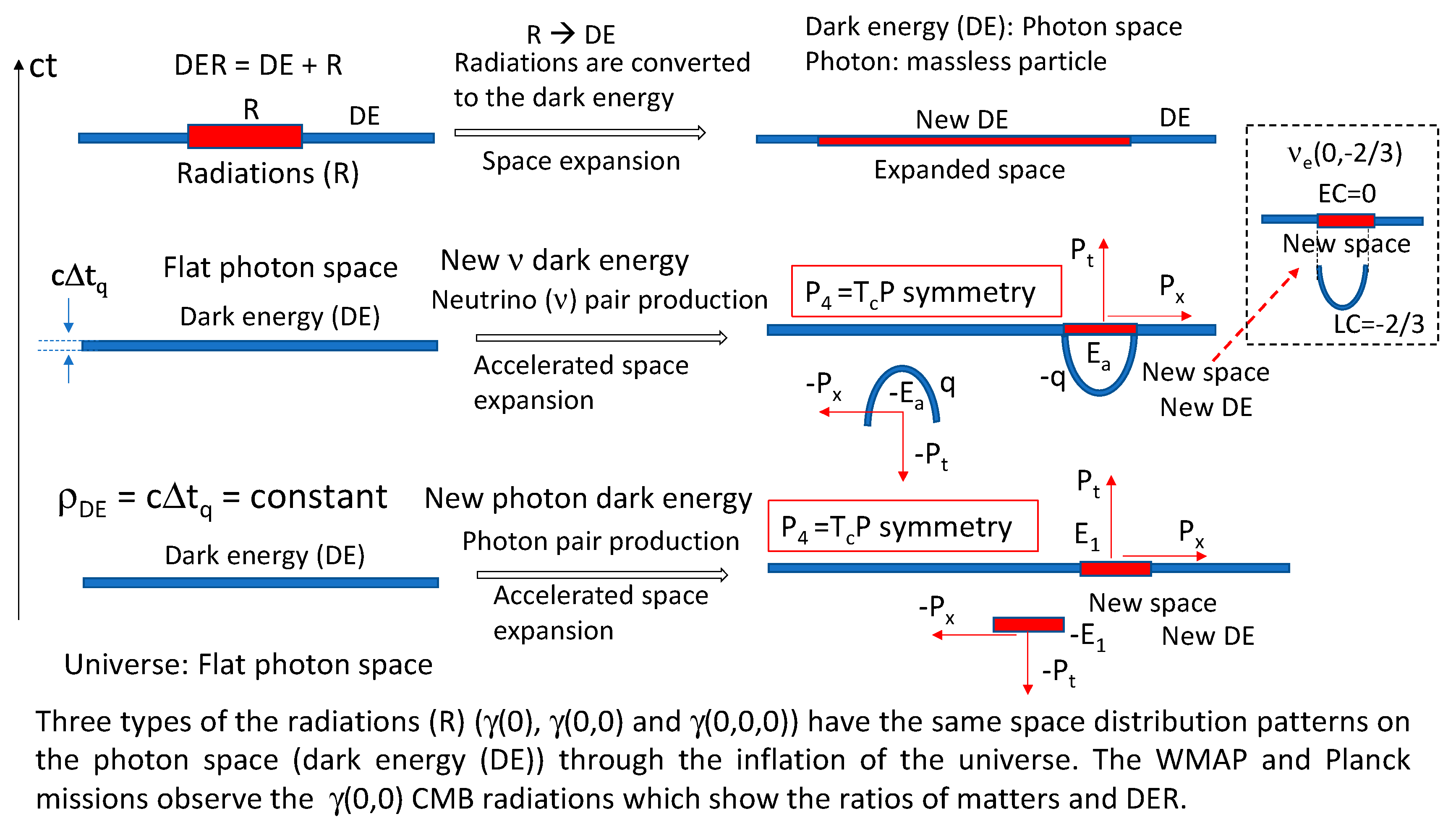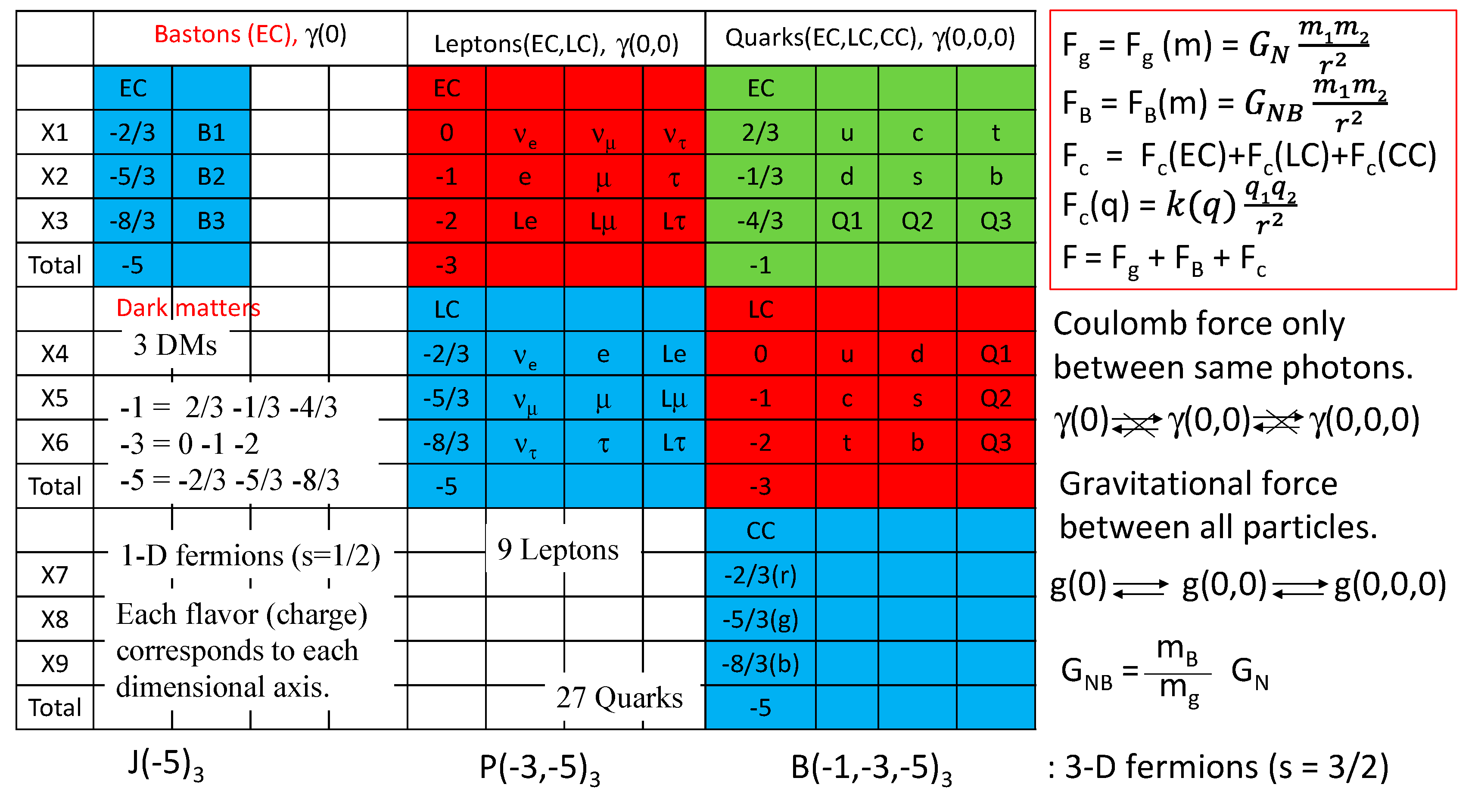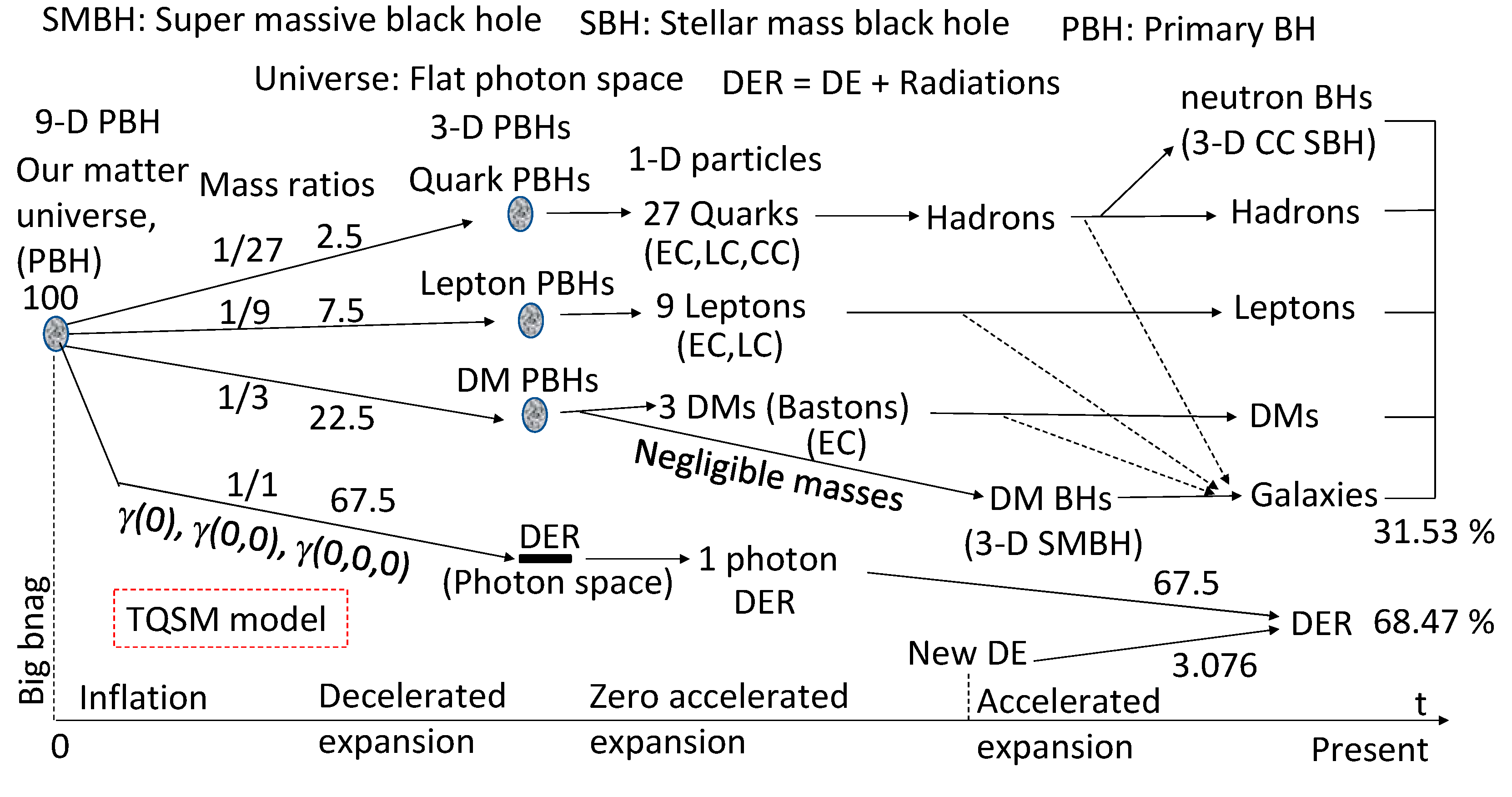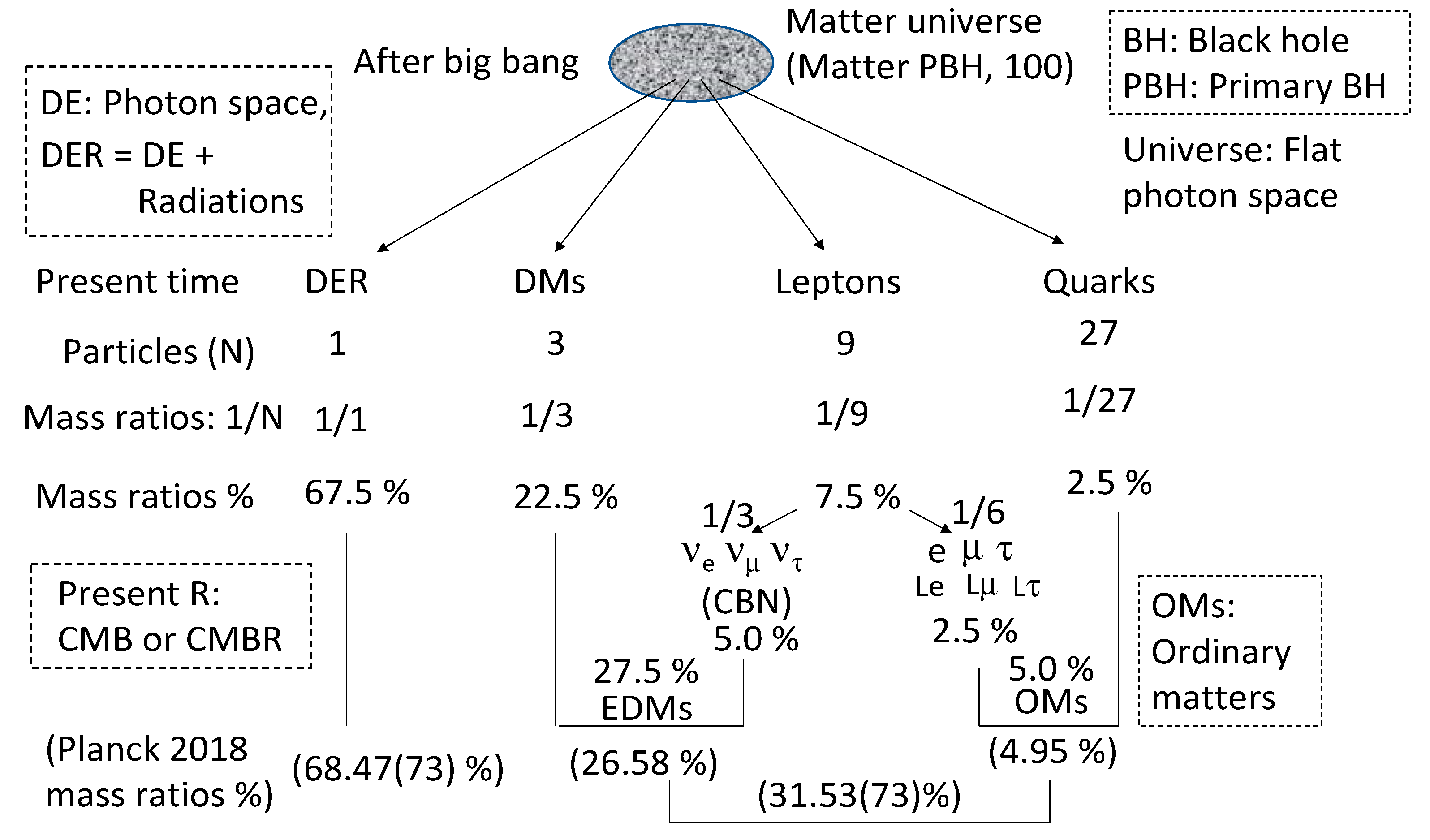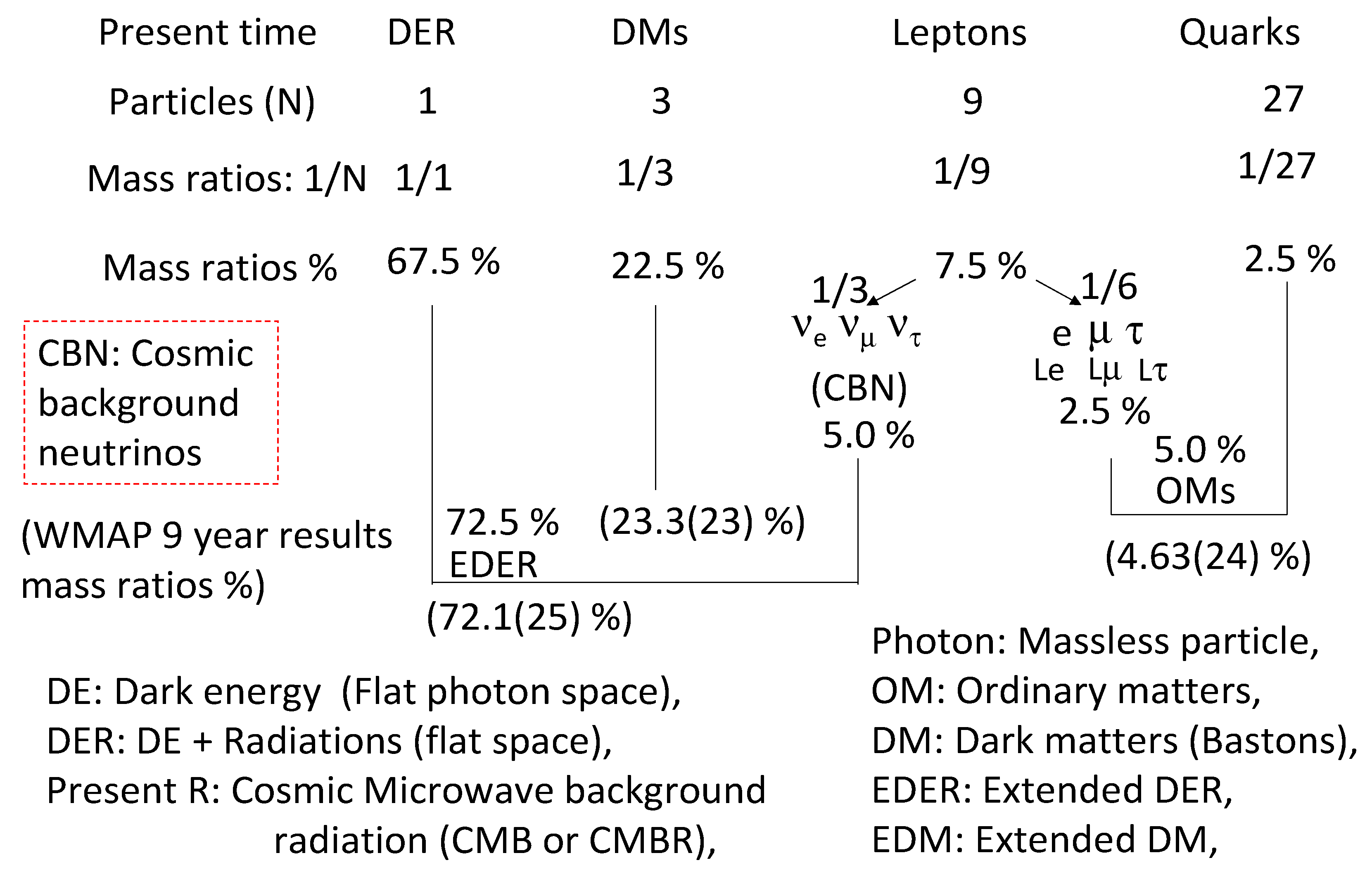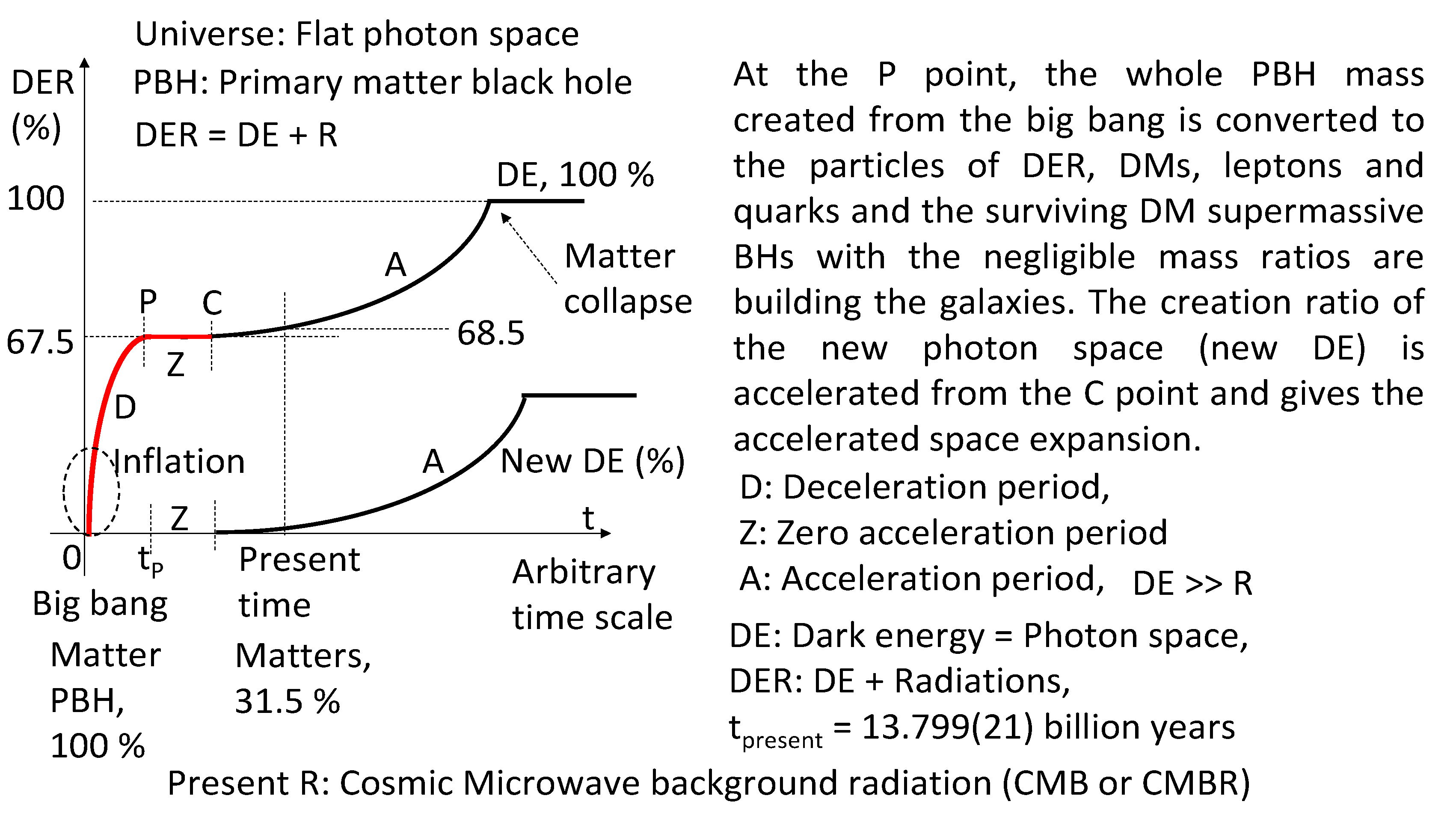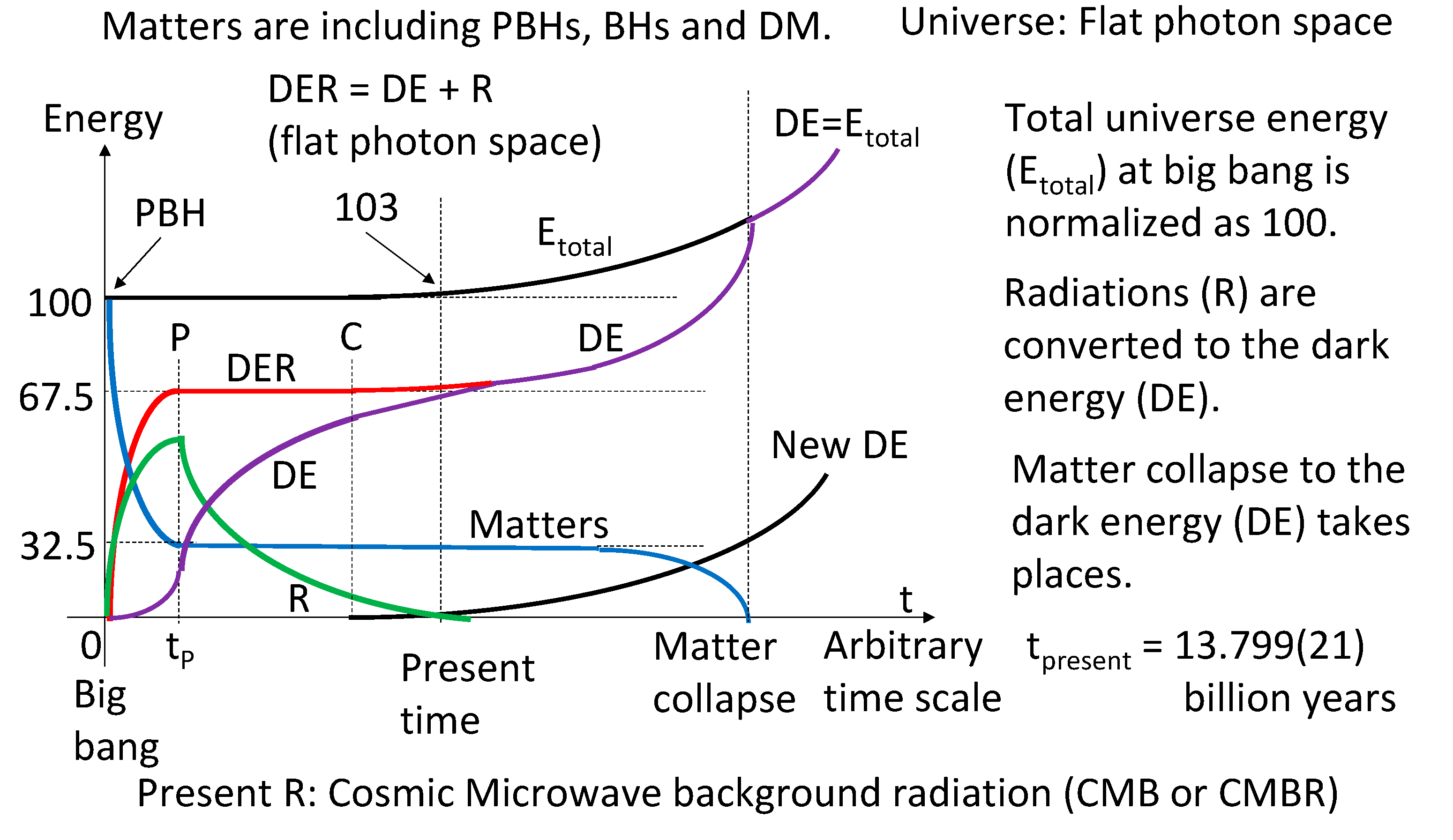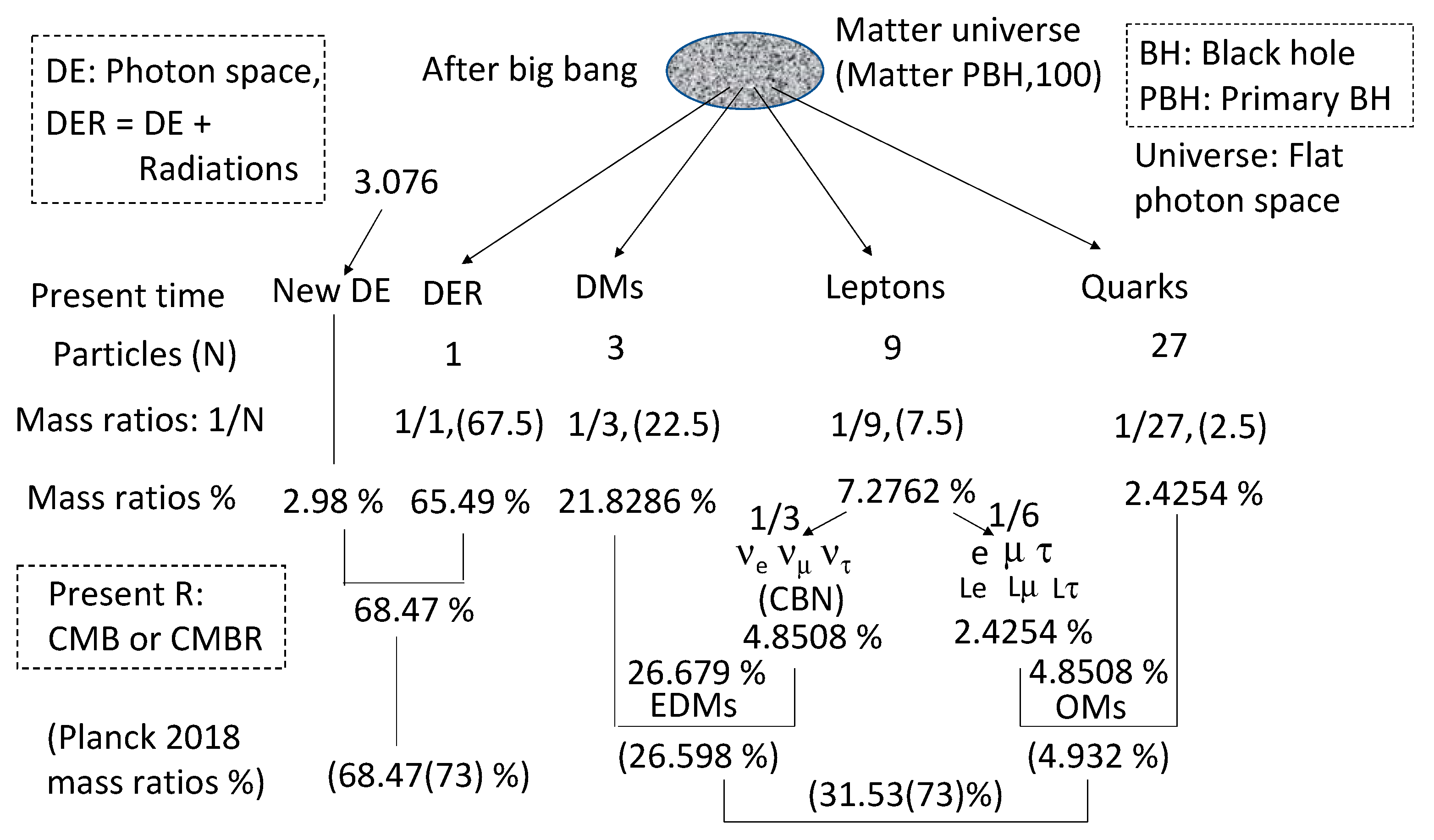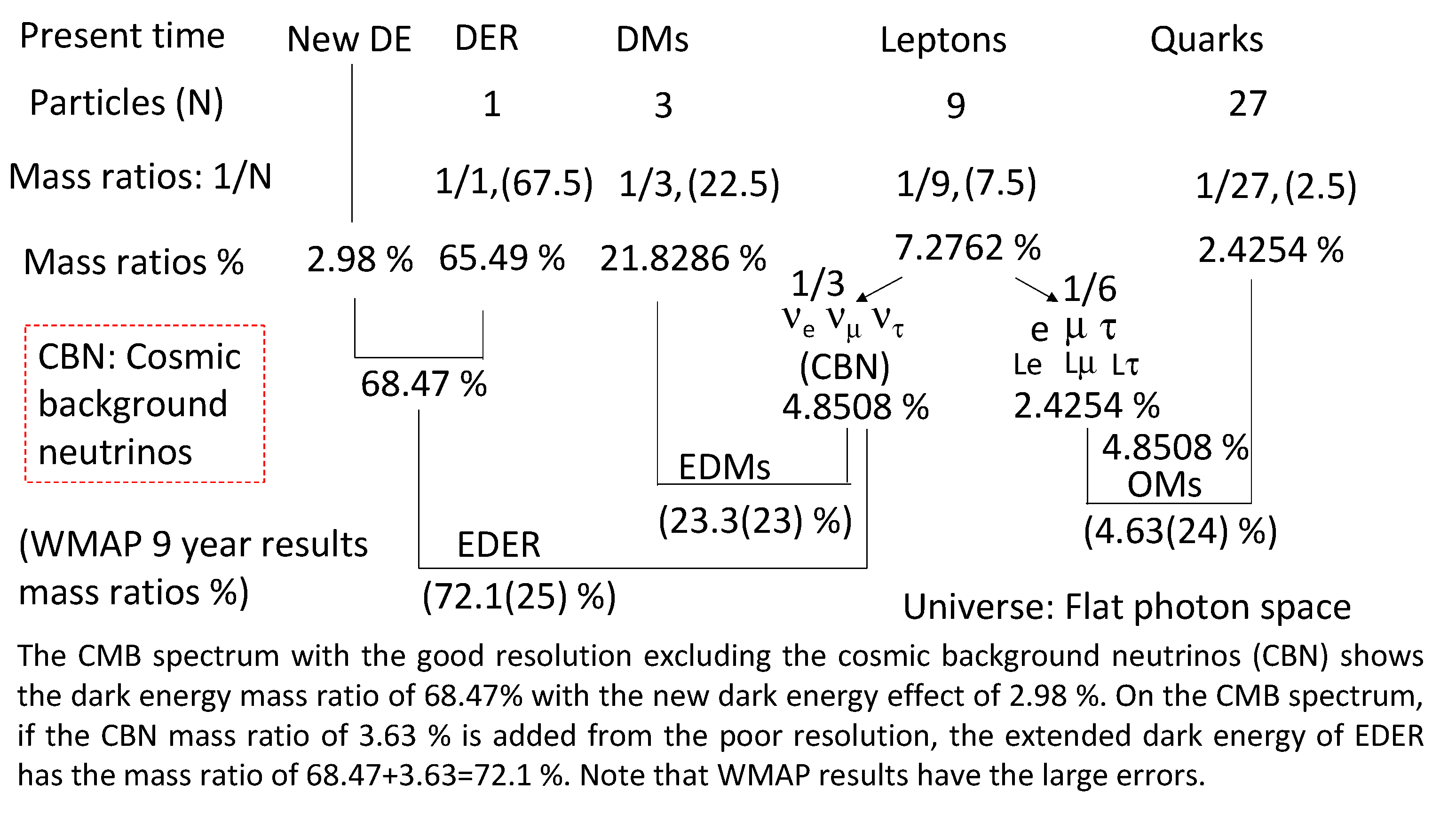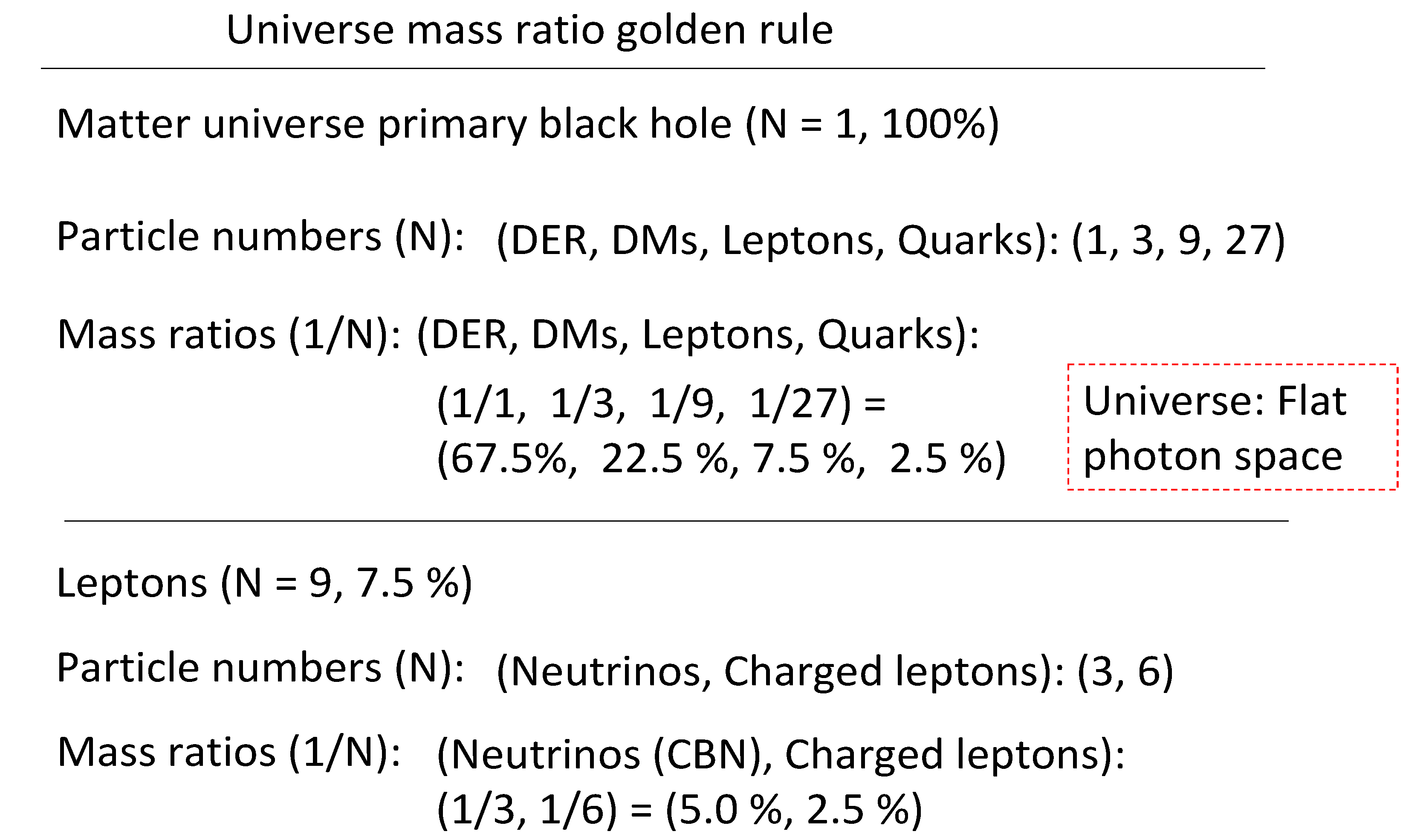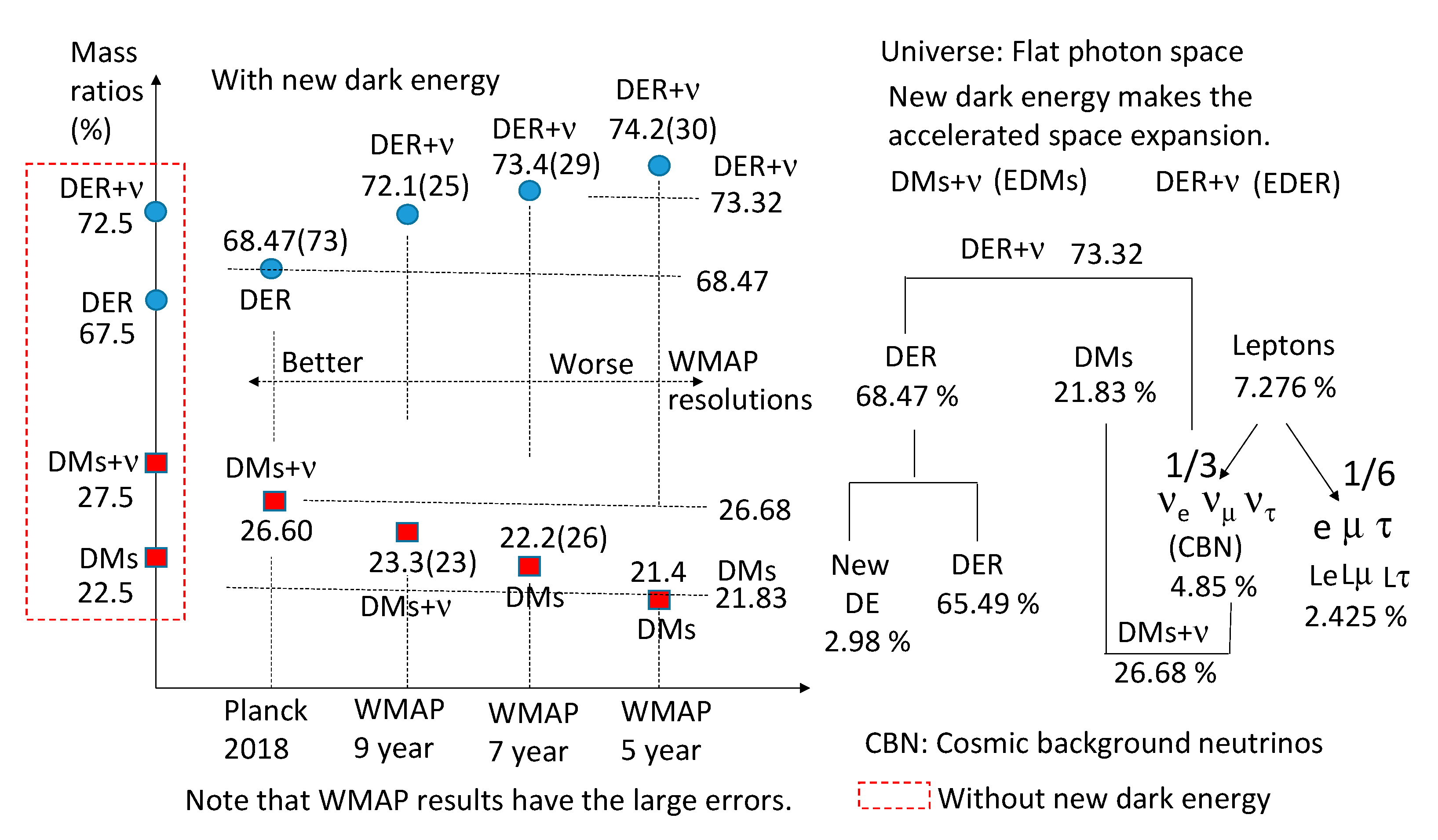The universe starts from the big bang in terms of the standard model of the cosmology. Then the singularity black hole after the big bang has been evolving through the inflation to the present flat universe. Through the inflation period, the matters and anti-matters were created from the pair production of the radiations. Then only the matters have survived until the present time [
1]. The standard model of the cosmology and particles cannot explain several questions such as the CP problem, dark energy (DE) and dark matters (DMs) etc. In other words, the CP problem about how the anti-matters disappeared needs to be solved. Also, the standard model of the particles has to be extended to include the dark matters. And, the properties of the dark energy are uncertain at this moment. In the universe evolution of the standard model, after the big bang, the radiations (photons) were dominating and then the dark matters (DMs) and ordinary matters (OMs) were dominating. At the present time, the dark energy to cause the accelerated space expansion of the universe is dominating. The physical properties of the dark energy and dark matters are unknown and only the normal matters and radiations are presently known in the standard model (SM). The radical ideas could be required to solve the unsolved questions of the universe such as the dark energy and dark matters. Therefore, the three-dimensional quantized space model (TQSM) based on the 10-D Euclidean space [
2] is introduced as the extension of the standard model (SM) in the present work.
Experimentally, the present mass ratios of the universe components which are the ordinary matters, dark matters and dark energy have been determined by the COBE [
3], WMAP [
4,
5,
6] and Planck [
7] missions observing the temperature fluctuations of the cosmic microwave background radiations (CMB or CMBR). The CMB resolutions of the WMAP [
4,
5,
6] and Planck [
7] missions were improved to decide the mass ratios of the dark energy (DE) and matters (dark matters (DMs) + ordinary matters (OMs)) at the present time. These missions show that the present universe is flat [
8]. The mass ratios are presented by the density ratios relative to the critical density. Therefore, the total mass density ratio of the flat universe is 1 relative to the critical mass density. And the DE density (Ω
Λ) and the matter density (Ω
m) are 0.685 and 0.315, respectively, based on the temperature fluctuations of the CMB radiations according to the Planck mission [
7]. The DE density and matter density are in the same order at the present time. Why these two densities are so close is not physically understood. This is called as the cosmic coincidence problem [
9]. The present mass ratios of the universe components cannot be determined without the CMB radiation data in terms of the standard model of the universe [
10,
11,
12,
13].
Now, in the present work, the three-dimensional quantized space model (TQSM) is applied to the unsolved questions of the universe. The singularity black hole (primary black hole (PBH)) of our matter universe is assumed to decay to the elementary particles (matters) and dark energy (DE) in
Figure 1. The matters are separated into the dark matters, leptons and quarks. In the standard model, the dark matters and dark energy are not known. The total DM mass is much larger than the total lepton mass. The dark energy is much larger than the matter mass according to the Planck [
7] and WMAP [
4,
5,
6] missions observing the CMB radiations. It is thought that the total quark mass is smaller than the total lepton mass. In
Figure 1, the produced mass ratios of the dark energy and matters are inversely proportional to the particle numbers of the dark energy and dark matters as the first assumption when the particles are produced from the decay of the primary black hole (PBH) of our matter universe. As seen in
Figure 1, the particle numbers of the DE (DER in the present work), DMs, leptons and quarks are 1, 3, 9 and 27, respectively, as the best fitting to the Planck 2018 results in which the dark energy and matters show the mass ratios of 68.47 (73) % and 31.53 (73) %, respectively. The best particle number combination (1, 3, 9, 27) of the four components (DER, DMs, Leptons, Quarks) to explain the Planck 2018 and WMAP results is the same as the particle number combination (1, 3, 9, 27) of the 3-dimensional quantized space model. In
Figure 1, the particle numbers of the DE (DER in the present work), DMs, leptons and quarks with 1, 3, 9 and 27, respectively, have the mass ratios of 67.5 % for the dark energy (DER) and 32.5 % for the matters. According to the results of
Figure 1, the dark energy has the 1 massless particle corresponding to the photon. Therefore, the dark energy is considered as the photon space in
Figure 2. Because the radiations are also the photons, the dark energy (DE) and radiations (R) are observed together as the DER photons. The Dark energy is the photon space covering the whole space of our matter universe and has the constant mass density. But the radiations are defined as the local photons (local photon spaces) covering the local space of our matter universe in
Figure 2. The radiations have the variable mass densities at the different space locations. The radiations produced from the primary black hole are observed as the cosmic microwave background radiations (CMB or CMBR) by the Planck [
7] and WMAP missions [
4,
5,
6] at the present time. The particle numbers of 1, 3, 9 and 27 in
Figure 1 corresponds to the photon (dark energy + radiations, DER), 3 dark matters (bastons), 9 leptons and 27 quarks, respectively, in the TQSM model in
Figure 3. The standard model with only the 6 leptons and 18 quarks cannot reproduce the observed mass ratios of the dark energy and matters even though the dark energy and dark matters are assumed for comparison in
Figure 1 of the present work. In the section 2, the detailed explanation for the cases without adding the new dark energy shown in Fig.2 is made. And in the section 3, the cases including the new dark energy causing the accelerated space expansion in
Figure 2 are explained.

